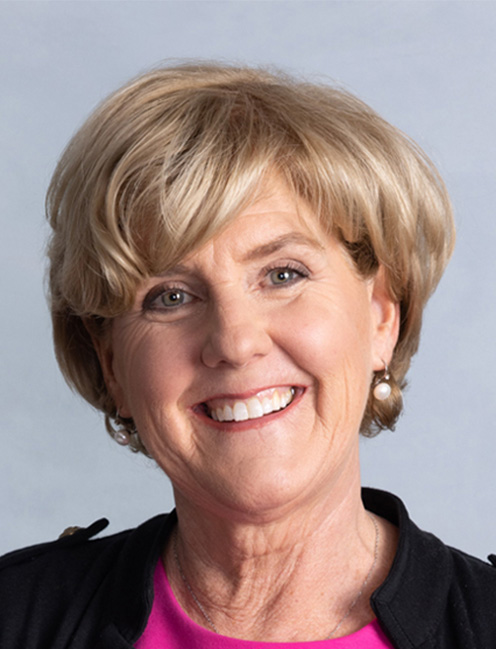-
Who We Are
Who We Are
For the last century, we’ve dedicated ourselves to empowering families like yours to prosper and endure. Like many of the leading families we serve, we have been through our own wealth journey.
Discover Pitcairn -
What We Do
Wealth Momentum®
The families we serve and the relationships we have with them are at the center of everything we do. Our proprietary Wealth Momentum® model harnesses powerful drivers of financial and family dynamics, maximizing the impact that sustains and grows wealth for generations to come.
Explore - Insights & News


Perhaps nothing has so much potential to disrupt a family as a second marriage. But this scenario doesn’t always have to divide the family. In fact, some second or even third wives find a way to bring the family closer together.
The traditional nuclear family is no longer a given today. With longer life expectancy and emphasis on personal satisfaction as an expectation of a good marriage, affluent parents often have more than one marriage. A “blended” family is one in which at least one partner is divorced, with children from an earlier marriage; and so there can be a connection with a former spouse. And young children can be faced with a new parent living in their household or claiming the attention of their custodial parent.
Second marriages are rife for conflict in how family wealth is inherited and can spark painful rifts or family feuds. In our research for our book, we interviewed several spouses who married successful wealth creators. They were mindful of the precarious nature of their status in the family and often took active steps to anticipate and avoid negativity and create harmony in the extended family.
Several of the women married business creators with children from an earlier marriage; they were often new to the level of wealth in their new family. There’s no defined role for a “second wife” and there’s a good chance that she may invite conflict with the rest of the family. The new spouse can be considerably younger and be seen as a competitor or intruder by the children—the more so, the older they are. The new spouses in our study didn’t want to remain disconnected from their new stepchildren or act as a distant rival for their father’s affection.
They defined positive, distinctive contributing roles to the business and the family that avoided or overcame conflict.
In each family, the new wife understood the potential for conflict and so she actively reached out not only to connect with the stepchildren but also with her new husband’s former wife.
We share below some stories from our research.
The “Force Multiplier”
The new wife of a man who has created a large family business and has his own grown children can be quite a challenge. This woman succeeded by developing a unique and unexpected matriarchal role.
Meryl married late to a business leader. Each of them came with grown children. She saw herself as a “force multiplier” who could use little things to make a big difference in all their lives. She and her kids joined a business family split by a contentious divorce, and so one of her goals was to create harmony in the family. She did that by reaching out to the former wife, the mother of his children, to include her in family activities. The plan succeeded, greatly reducing family tension, and even allowing them to share family holidays.
Meryl also undertook several projects to build the family culture and connect the family. She wrote a history of the company, highlighting the contributions of many family members, including that of her husband and his former wife. Then she followed up by starting a monthly family newsletter. Each issue interviewed a family member. She told us how this developed: “My husband’s late-in-life goal was to be close to his family. He focused on the first thing that he wanted [after his divorce and new marriage], which was to heal a rift that was tearing the family apart. Next, he always wanted to communicate values to his children because he felt they were the secret to a happy life. If you have admirable values like honesty and reliability, you have a much better chance of having friends, having respect, getting good jobs. He wanted to communicate this to his children and to those who came after him, but he wasn’t sure how to do it.
“My father used to have what he called ‘family hour’ in which he would just lecture at us—but that wasn’t my husband’s personality. He couldn’t see himself standing up in front of his children for an hour every Sunday and lecturing at them after church services. So, we came up with another idea, which has just been so powerful and useful and satisfying. I said, ‘What if I write a newsletter in which I interview you about things that you consider important like prenups or being frugal or caring about where you came from?’
“It was a full-page newsletter that would come out by mail once a month. Each family member would get their own copy. The day the newsletter arrived, everybody would drop everything, tear it open, and read it, and then they’d talk about it. That was pretty satisfying for me—getting feedback that they loved it.
“It began to branch out so that I wouldn’t just interview my husband. I interviewed aunts and uncles. I told stories from way back. Like times with the company where there was a crisis, and they could have gone bankrupt—the terrible problems as well as the magnificent successes.”
She said that the newsletter has evolved not just to share family experiences but also for family members to respond to deep questions like “What does it mean to be me?” or “Who’s your greatest hero?”
Meryl did not stop there. She created whole family vacations every year as a way for different generations to get together and to know and value each other. These connections have led to a real community among the now several generations of family members. And after the passing of her husband, these activities have kept the family connected. She’s now regarded as the elder in the family, preparing to pass family leadership to a daughter in the next generation.
This was Meryl’s way of being the family’s “chief emotional officer” as she called it. She created an ongoing, engaged cross-generational family community that mirrored the values and work ethic of the company’s patriarch. As the family storyteller, she was extraordinary at “managing the family story” and ensuring that its reputation is now honored and protected.
Another woman we interviewed said she married later in life when both her own and his kids were nearly grown. Her new husband was already a revered leader in the company, while she began to add another dimension. He held many values on employee engagement and community, but she saw that they weren’t being fully expressed or implemented. She had a more human, personal touch. So, she began to work on these activities, building on the values framework of the patriarch and adding her own much more open and expressive style to create opportunities to build community within the company. As a result, the company culture became more aligned with its values, as well as more open and collaborative. This is how she described her work: “The matriarch’s role is transmission of values across generations. Part of that is education and the importance of doing well and being motivated—earning things, not being given things for the reason of being wealthy. I think the major role is to steer, to see things, and be attracted to them, but learn to set your own path. …The transition of values is definitely a partnership and requires teamwork.”
The above examples show that new wives can shift the tenor of the family, build or sustain family connection, and act as mentors to their new children.
They define and differentiate their role by being available to help their children and stepchildren, especially girls, make decisions and formulate their lives. In two of the families we studied, the new mother helped her stepdaughters enter the business and take on leadership roles. Another wife adopted a traditional role in her marriage, but was a leader in the community, working with her husband in a huge community philanthropic enterprise. Because of her leadership, she was able to bring her children into that activity as well, and their roles grew after her husband’s death.
Fostering Family Unity
Marrying into a family of wealth may open a new life, especially if it’s a second marriage for a single mother. This is the story of a woman who married into a family of old wealth that was growing apart, and, through her leadership, took his blended family on an independent path.
Ginny made a commitment to her husband, but she wasn’t prepared to relate to a family that grew up with incredible wealth. Her role was to help her husband forge his own separate path and raise children to follow their own values, not those of their extended family. Her husband, Jerry, had grown up wealthy but lived a simple life and didn’t think of himself as wealthy, even if he knew that was the case.
When she met Jerry, Ginny was raising her four children as a single mother. In their first conversation at a party, she had no idea of his lineage. He began to spend time at her house, and they got to know each other as their relationship progressed. She learned of his legacy but neither of them spent much time thinking about his wealth. It wasn’t a topic that was really discussed in his family. Jerry was a trustee of a large trust fund, but he lived a frugal, quiet life as a furniture maker. Like Ginny, he cared deeply about nature and art, and they wanted to create their own path. So, her role in getting them to differentiate from the extended family was crucial.
Here’s how she described their relationship: “I don’t know if it’s old-fashioned, but we clung to our intentional ignorance and just thought we could see if we could make a life together. …My job is to be his helpmate. We were very close, spent a huge amount of time together.
I have long gone to all his trust meetings. We do Zoom meetings and review things together. We’re involved in our foundation and choose charitable activities that we value together. We enable each other, hopefully in a good way, to be more forward and complete people. …I’m a cheerleader for Jerry. He has a lot of complicated financial responsibilities that are slightly invisible, and I stand with him on those.”
With a shared ignorance and disinterest in the family wealth, Ginny and her four children moved to his estate. Her kids were a little overwhelmed at first, but they didn’t talk about it. Jerry and Ginny soon had two children together and he adopted her kids—and they agreed to treat all six of them equally. They shared personal values they wanted to leave pass to their children. “[We are] aspirationally high-minded for what really will work and be good in our culture and be good on our planet. I don’t mean to sound too grandiose but that’s a big deal for us.”
Ginny became the originator and driver of family conversations and meetings in their own growing family to live sustainably. After attending a family wealth seminar, they began to talk about the purpose of their family trust, discovering the need for conversations in the extended family about the future of their wealth. As their children grew up, the family meetings focused on educating the children about their wealth and talking about social values and philanthropy. After a cautious, sometimes reluctant start, the family began to enjoy these meetings and learn to communicate more openly.
By bringing these ideas into Jerry’s extended family, they were not trying to challenge the family but just follow ideas they thought were sensible. Even though Jerry wasn’t close with his siblings or divorced parents, they spent time at his family’s vacation place. The meetings were helpful, but the conversations petered out as their financial holdings became less interconnected. “I tried to just keep it going, not give up,” Ginny said. “If somebody is not interested in your meeting, that doesn’t matter. You can just try to make it more interesting. But you’re not going to pack your bags and go home because it’s frustrating or you don’t have 100 percent buy-in.” She felt she had some influence on the extended family, but their focus was with their own children and eventually she let go of her attempt to bond the extended family and instead recommitted her efforts to her own family.
“With our kids there are subtle struggles and conflicts, and we try to resolve them. I think we were called ‘laissez-faire’ parents,” she said. “We have high expectations but a long timeline. …I’m hoping that our laissez-faire parenting will make them more resilient and adaptable and that their gratitude for the life they’re offered will carry them forward to be constructive and sharing as they continue in their lives.”
Their kids became very active in social projects—like starting a sustainable elementary school. Now they have grandchildren, ages twelve to twenty-three, and they’re also included in education and family meetings. Together, Ginny and Jerry are looking deeply at their values and are working together on personal development for each of them. She believes that inherited wealth isn’t shameful or something to hide. It can do a lot of good. “I have the role with my own [children and grandchildren] to encourage the multilayers of education and things that have to do with their place in the community,” she said. “You can’t help with your place in the community if you can’t help yourself; and the way to do it is by trying to learn and grow to be your best self. …They’ve been raised to understand it’s not enough to value work but that it’s important in our culture for your work to reflect more.”
Their children didn’t have to consider working for money, but their grandchildren do, as their inheritance is lower. It’s a challenging dynamic to navigate. “The next generation is being given a slightly different message,” Ginny concluded. “That they should [both] be earners and choose something that does good in the world.”
Disclaimer: Pitcairn Wealth Advisors LLC (“PWA”) is a registered investment adviser with its principal place of business in the Commonwealth of Pennsylvania. Registration does not imply a certain level of skill or training. Additional information about PWA, including our registration status, fees, and services is available on the SEC’s website at www.adviserinfo.sec.gov. This material was prepared solely for informational, illustrative, and convenience purposes only and all users should be guided accordingly. All information, opinions, and estimates contained herein are given as of the date hereof and are subject to change without notice. PWA and its affiliates (jointly referred to as “Pitcairn”) do not make any representations as to the accuracy, timeliness, suitability, completeness, or relevance of any information prepared by any unaffiliated third party, whether referenced or incorporated herein, and takes no responsibility thereof. As Pitcairn does not provide legal services, all users are advised to seek the advice of independent legal and tax counsel prior to relying upon or acting upon any information contained herein. The performance numbers displayed to the user may have been adversely or favorably impacted by events and economic conditions that will not prevail in the future. Past investment performance is not indicative of future results. The indices discussed are unmanaged and do not incur management fees, transaction costs, or other expenses associated with investable products. It is not possible to invest directly in an index. Projections are based on models that assume normally distributed outcomes which may not reflect actual experience. Consistent with its obligation to obtain “best execution,” Pitcairn, in exercising its investment discretion over advisory or fiduciary assets in client accounts, may allocate orders for the purchase, sale, or exchange of securities for the account to such brokers and dealers for execution on such markets, at such prices, and at such commission rates as, in the good faith judgment of Pitcairn, will be in the best interest of the account, taking into consideration in the selection of such broker and dealer, not only the available prices and rates of brokerage commissions, but also other relevant factors (such as, without limitation, execution capabilities, products, research or services provided by such brokers or dealers which are expected to provide lawful and appropriate assistance to Pitcairn in the performance of its investment decision making responsibilities). This material should not be regarded as a complete analysis of the subjects discussed. This material is provided for information purposes only and is not an offer to sell or the solicitation of an offer to purchase an interest or any other security or financial instrument.






